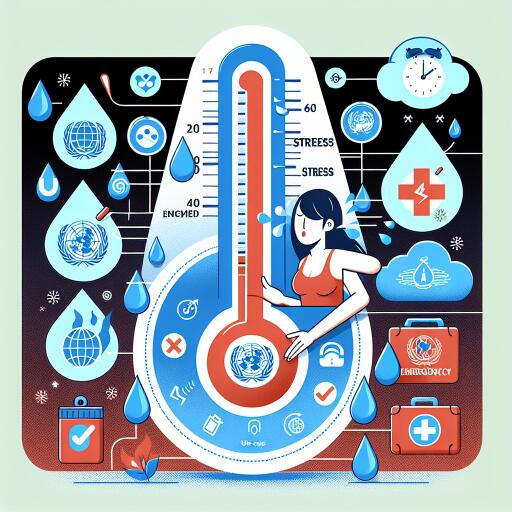
Heat index must capture stress even under extreme conditions to improve risk assessment, preparedness: UN-ESCAP official
In addressing the growing challenges posed by climate change, accurately assessing heat-related health risks becomes crucial to reducing heat stress-induced morbidity and mortality. Originally developed by the US in 1979, the Heat Index was designed to articulate human discomfort under standard temperature and humidity conditions. However, as the planet now frequently breaches previous heat records, these measurements fall short in evaluating the extreme temperatures and humidity experienced during today’s intensified heatwaves.
According to Sanjay Srivastava, an authority on Disaster Risk Reduction at the United Nations Economic and Social Commission for Asia and the Pacific (UN-ESCAP) in Bangkok, an Extended Heat Index (EHI) is urgently required. This enhanced index would more accurately reflect heat stress, even in the face of extreme conditions, thereby improving risk assessment and preparedness. EHI can offer a more precise measure of heat exposure, tailored to varying climatic and socio-economic vulnerability contexts.
Instances such as India’s premature onset of heatwave season further underline this need. Unusually high temperatures along its West Coast in February are attributed to an anomalously dry winter, among other contributing factors. This situation showcases how extreme heat periods now often extend beyond earlier seasonal patterns and geographic expectations.
Developing an EHI capable of accommodating these changes ensures that those responsible for managing disaster risks are equipped with better tools for prediction and action. Not only would this index facilitate a broader range of risk assessment applications, but it would also increase preparedness across diverse regions affected by heatwaves.
Translational Science: Bridging Discovery and Application
The field of translational science is increasingly critical as it seeks to apply scientific research directly to address real-world health challenges such as those associated with extreme heat. In particular, institutions like the Centre for Disaster Management at Kasturba Medical College in Manipal are implementing a Heat Stroke Score System intended to be both simple and applicable to patient populations.
Research highlights the alarming reality of climate change, with data indicating that in 2024, climate change contributed to 41 additional days of “dangerous” heat. Such pervasive warmth has had compounding effects, contributing to various natural disasters, including flash floods, as evidenced by studies linking 15 out of 16 floods to climate change-affected rainfall.
The Health Hazards of Extreme Heat
Extreme heat carries with it significant health risks, as reinforced by a thorough analysis of temperature-attributable mortality on a global scale. A particular study investigating 65 million deaths across nine countries illustrated the link between extreme temperatures—whether hot or cold—and 17 different causes of death, such as cardiorespiratory and metabolic illnesses. This was detailed further in The Lancet’s Heat and Health Series, underlining how heat results in direct physiological harm, including dehydration and cardiovascular stress.
Heat Action Plans: A Community-centric Approach
Efforts to adapt to extreme heat have heralded the development of Heat Action Plans (HAPs) at local levels. These plans typically involve early warning systems, engaging with communities, targeted outreach to vulnerable groups, and cross-sectoral collaboration. Despite showing promise in managing heat-related health issues, the rapidly rising global temperatures necessitate more robust and science-driven interventions.
For HAPs to remain effective, they must incorporate recent scientific findings, set local-specific temperature and humidity thresholds appropriate for high-risk urban zones, and employ risk analytics to better identify and defend vulnerable populations.
Comprehensive Strategies for Extreme Heat Management
Current strategies for dealing with extreme heat often prioritize emergency responses. However, there is a pressing need for broader approaches that integrate non-economic loss and damage (NELD) factors into heat management frameworks. Only by expanding the scope of these strategies can a more comprehensive and effective response be initiated, reflecting the complexities of today’s climate challenges.





Leave a Reply